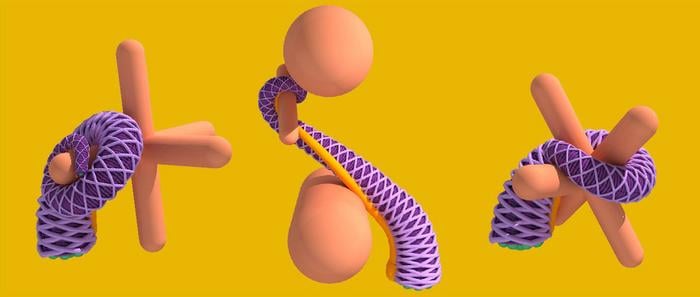Summary: Researchers have created an unprecedented computational model of an octopus arm, incorporating nearly 200 muscle groups to understand how these creatures control their incredibly flexible limbs. The study reveals that complex three-dimensional movements can arise from surprisingly simple muscle patterns, offering insights for both biology and robotics.
Journal: Proceedings of the National Academy of Sciences, October 1, 2024, DOI: 10.1073/pnas.2318769121 | Reading time: 4 minutes
Decoding Nature’s Most Flexible Limb
Unlike humans, who control their movements through a centralized brain, octopuses have a distributed nervous system with decision-making capabilities spread along their arms. Each arm can operate independently, achieving nearly infinite degrees of movement – a feat that has long puzzled scientists and engineers alike.
“The general motivation is to figure out how to control a complex system with many degrees of freedom and find an alternative to running expensive computations,” explains Professor Mattia Gazzola. “The octopus is an interesting animal model that has been studied since the 1980s. [Researchers] want to know the ‘secret’ to its abilities.”
From Live Octopus to Computer Model
The research team combined multiple approaches to understand octopus arm control. They used MRI and tissue analysis to create a detailed model of the arm’s muscle structure. They also recorded live octopuses performing tasks, tracking their movements as they reached through a hole in a Plexiglas sheet to manipulate objects.
“It was almost like working with a little kid,” Gazzola noted of observing the octopus. “You have to know how to approach [the octopus] and keep it engaged.”
Simplifying the Complex
The researchers discovered that complex arm movements could be achieved through relatively simple muscle activation patterns. “Instead of working with thousands of degrees of freedom, we related two topological quantities—writhe and twist—to muscle dynamics,” Gazzola explains. These two quantities, controlled by different muscle groups, work together to create three-dimensional motion.
This understanding could lead to advances in robotics. As graduate student Arman Tekinalp notes, “I find it very interesting to learn from live animals and translate some of the insights into ideas for soft robotic design.”
Glossary
- Muscular hydrostat: A biological structure like an octopus arm that moves without bones
- Topology: The study of geometric properties that remain unchanged under deformation
- Writhe: A measure of how a curve twists around itself in three-dimensional space
- Degrees of freedom: The number of independent ways something can move
Quiz
- How many muscle groups are in the researchers’ octopus arm model?
Answer: Nearly 200 - How do octopuses differ from humans in terms of brain organization?
Answer: They have a distributed nervous system with decision-making spread along their arms - What equipment did researchers use to study live octopus movements?
Answer: A Plexiglas sheet with a hole for the octopus to reach through - What two quantities did researchers use to understand arm movement?
Answer: Writhe and twist
Enjoy this story? Get our newsletter! https://scienceblog.substack.com/


